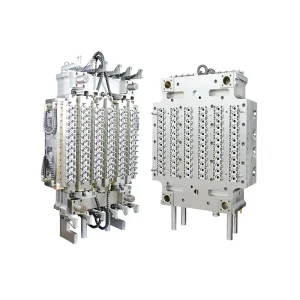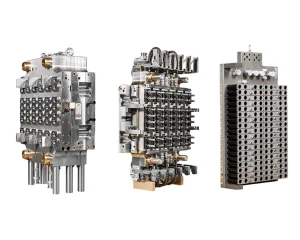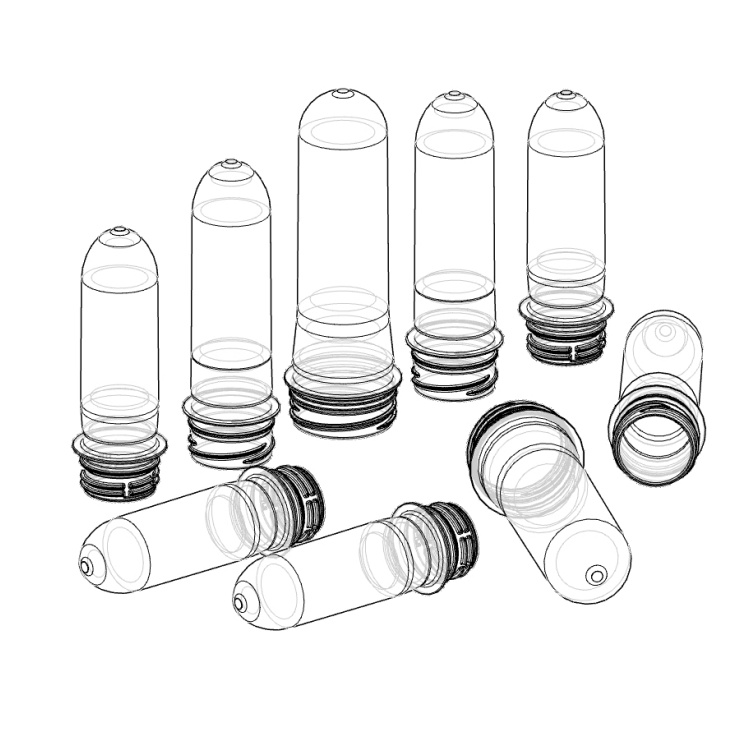What is a PET Injection Mold and How Does It Shape Preform Quality
PET injection molds are carefully crafted tools that turn melted PET into top-notch preforms for making bottles. Important parts like cavity shape, hot runner setups, and cooling systems ensure steady results and long-lasting use. Learn how smart mold design boosts preform quality and speeds up production.

What Is the Function of a PET Injection Mold in Preform Manufacturing?
How Do You Define a PET Injection Mold and What Is Its Main Role?
A PET injection mold is a special tool that forms melted polyethylene terephthalate (PET) into preforms. These preforms later become bottles or containers. The main job of PET injection molds is creating precise PET products, like bottles, with high accuracy. The process starts when hot, liquid PET gets pushed into the mold under strong pressure. This shapes the preform. After it cools, the mold opens, and the solid preform pops out.
What Are the Core Components That Make Up a Typical PET Injection Mold?
A PET injection mold has several key parts: cavity plates, core plates, guide pins, ejector systems, and hot runner systems. Each piece helps shape, cool, or release the preform. The cavity plate forms the preform’s outer shape, while the core shapes its inside. Accurate alignment parts ensure the same quality every time the mold runs.
Why Does Precision Engineering Matter So Much in Mold Design?
Precision engineering is super important. It ensures preforms are made correctly. Even a tiny mistake, like 0.01 mm, can cause problems like extra plastic bits or incomplete parts. Well-made molds give preforms even wall thickness and stable sizes. These are vital for the next step—blow molding—where preforms turn into bottles.
How Does Mold Design Impact Preform Quality?
In What Ways Does Cavity Design Influence Preform Uniformity?
Cavity design controls how even each preform turns out. Things like core alignment, smooth surfaces, and cooling paths affect how the PET spreads and shrinks. BJY’s molds are not only precise but also fast and tough. A balanced multi-cavity setup makes sure all preforms have the same weight and thickness.
Why Is the Hot Runner System Essential for Material Flow Control?
The hot runner system keeps melted PET at the right temperature as it flows into cavities. This prevents cold spots that could slow the flow or leave gaps. BJY’s design makes maintenance easy, separate from hot runners, cutting costs and boosting reliability. A steady heat level across nozzles keeps PET smooth and prevents it from breaking down.
How Does Gate Design Affect Clarity and Mechanical Performance?
The gate’s spot and size decide how melted plastic enters the cavity. A bad gate design can cause stress marks or lines that ruin the preform’s clear look. For strong bottles, like those for fizzy drinks, good gating lowers stress and makes preforms tougher.
Which Processing Parameters Are Most Critical for Preform Quality?
How Does Temperature Regulation Influence Material Behavior?
Temperature control affects how PET preforms form crystals. Too much heat can make preforms yellow. Too little heat might cause uneven filling or rough surfaces. Making cap molds requires picking the right materials, structure, and heat control.
Why Should You Optimize Cycle Time for Better Dimensional Stability?
Fast cycle times increase output but need enough cooling to keep preform sizes steady before they’re pushed out. BJY’s cap molds aim for quick cycles and high output. Bad timing can lead to warped or dented preforms from uneven cooling.
What Role Does Mold Venting Play in Achieving Smooth Surface Finish?
Venting lets trapped air escape during injection. Without good vents at key spots, like parting lines or ribs, air pockets can cause burn marks or holes on the preform’s surface.
How Do BJY’s Molds Demonstrate Engineering Excellence?
What Types of PET Preform Molds Are Available from BJY?
BJY’s preform injection molds are built to resist wear and last long. They offer setups from 32 to 144 cavities with neck finishes like 28mm (1716/1810/1881), 26/22mm, 29/25mm, and more. These work for everything from water bottles to oil containers. A standout is their 48-Cavity PET Preform Mold, made for Huayan machines, perfect for scaling up with precision.

How Do Advanced Cooling Systems Improve Throughput?
Good cooling cuts cycle time without hurting quality. BJY’s design saves energy, making production eco-friendly. Smart water channels in BJY molds keep even temperatures across all cavities.
Why Is Their Cavity Manufacturing Process So Important for Wall Thickness Consistency?
High-precision CNC machining creates cavities with super tight tolerances, down to microns. This ensures steady wall thickness, which is key for how bottles perform in blow molding.
Can You Improve Production Flexibility With Custom Solutions?
How Does Modular Design Support Versatile Manufacturing Demands?
Modular parts let you swap out pieces instead of replacing whole molds. This is great for switching to new bottle designs or neck sizes without stopping production.
Are These Molds Compatible With High-Speed Machines on the Market Today?
BJY’s preform injection molds work with top machines like Husky, Netstal, Sipa, and Krauss Maffei. They fit smoothly into your setup and handle fast cycles.
What Makes These Molds Easier To Maintain Over Long-Term Use?
Features like self-cleaning vents and easy-to-reach runner systems cut downtime during maintenance. This boosts OEE (Overall Equipment Effectiveness) for smoother operations.
What Should You Consider When Choosing a High-Performance Mold?
How Do You Align Mold Specs With Your Production Goals?
First, check your output needs, like bottles per hour. Think about the PET type—standard or recycled—and the neck finish your market wants. Match these with cavity options, like 48-cavity or 96-cavity molds.
Why Should You Choose BJY as Your Trusted Partner in Preform Production?
If you want custom solutions with expert support—from bottle design to mold testing—BJY delivers more than just tools. They offer smart designs for quick color switches and eco-friendly engineering that saves energy while boosting output. BJY’s molds give you a competitive edge and worry-free production.
FAQs
Q1: What is a preform mold used for?
A: A preform mold shapes melted PET into preforms through precise injection molding. These preforms are later blown into final bottle shapes.
Q2: Are BJY’s injection molds durable?
A: Their have high performance and high precision, use S136 steel material and and undergone special processing, resulting in a considerable mold service life. Customers are very satisfied with the product.
Q3: Is the mold compatible with existing equipment?
A: Yes, BJY can provide molds that match the machinery used by our customers and quickly replace parts without modifying the equipment.



